By Lisa A. Dubois

Back in 2010, Kimberly Bryant, an executive working for a large biotech company in the corporate ecosphere of Silicon Valley, was attending a conference on women and leadership. Suddenly, she’d had enough.
As she listened to panelist after panelist repeat the same old kvetch about how the technology industry is dominated by men because there aren’t enough women out there to fill positions, something clicked. “This is not acceptable,” Bryant, BE’89, thought to herself. “Twenty-plus years after I received my engineering degree, we’re still complaining that we can’t find women to fill these roles. It’s ridiculous.”
She didn’t know at that moment what she was going to do about it—but she did know she could no longer stand by while the problem festered.
A year later she took a leap of faith and founded the nonprofit organization Black Girls Code. The mission of Black Girls Code is to reach out to minority girls age 7 to 17 from all socioeconomic levels, and teach them about computer technology—from creating websites and writing computer applications to crafting computer games and working in robotics. The organization’s goal is to inspire these girls to become not only the users of complex technology, but also the innovators of tomorrow.
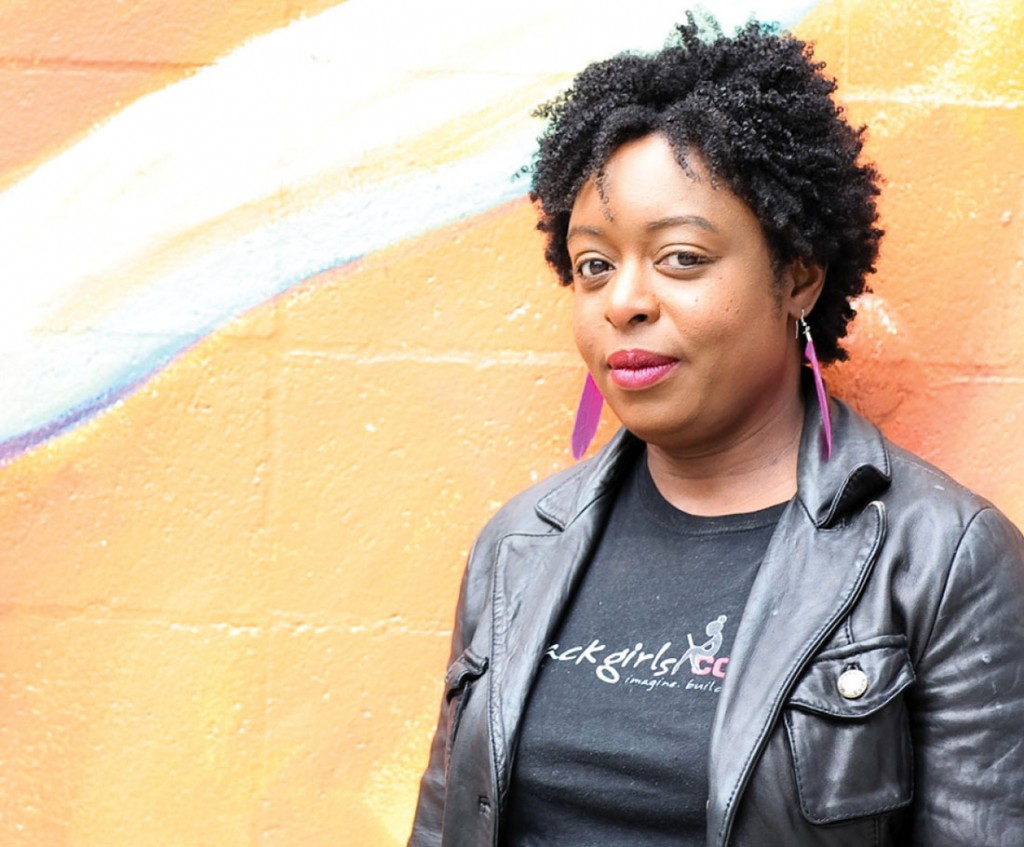
Bryant had been in the corporate world long enough to understand that if her idea was to be successful, she would have to shake up the status quo—which she certainly did from the beginning. People were taken aback—some were even offended—that she was defining such a narrow target audience by calling her organization Black Girls Code.
Yet the name resonated, particularly with other women in the industry who longed just as passionately as she did for more diversity in the high-tech world. Validation from her peers gave Bryant the strength to say, “OK, this is going to be a very bold statement, but that’s what makes it great. It’s more than just about the coding. It’s an affirmation for these girls from underrepresented communities. This is what they do. This is who they are.”
The traditional and outdated stereotype of the computer geek is a socially awkward guy with thick glasses and a bad haircut—someone who sits alone all day in a cubicle tapping out arcane code on his keyboard—which is just one reason so few young females from ethnically diverse backgrounds enter the field. They find no appeal in that kind of isolated, self-contained work life.
On the other hand, if Black Girls Code hits its mark, the computer “geek” of tomorrow may look a lot like Bryant herself: an articulate, confident woman from a racial minority who is determined to make a positive impact on the world.
Born and raised by a divorced single mom in Memphis, Tennessee, Bryant grew up as a self-described “girly-girl” whose favorite activity was playing with dolls. She thought she wanted to be a lawyer, but because she was so talented in science and math, her high-school guidance counselor persuaded her to pursue a college degree in engineering instead.
She entered Vanderbilt University in 1985, intending to become a civil engineer and work on interstate highways or airplane tarmacs. But the real action, she soon discovered, was happening in electronics. This was early in the era of the microchip, the personal computer and the portable cellphone. Lured by the innovative burst in that field, she switched her major to electrical engineering, literally going for the power. After concentrating her studies on high-voltage electronics, she landed jobs at Westinghouse Electric and DuPont.
EXHILARATING AND LONELY
This period in her life was exhilarating but also quite lonely. Often she was the only female, and invariably the only black female, in her classes or at industry conferences. Although she was not an outcast, she certainly felt like an outsider.
“The Vanderbilt experience made me more sensitive to the need for creating a more inclusive industry,” Bryant says. “It was difficult. Getting through Vanderbilt Engineering School was one of the hardest things I ever did in my life at the time—but it was also a great achievement. It gave me the grit and the resiliency to be able to stick to the path I’m on right now, regardless of what the roadblocks are. I’m sticking with it to make a difference.”
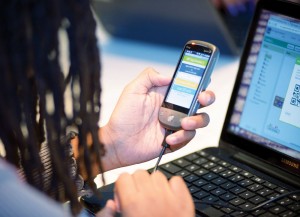
Data coming from the Center for Women’s Business Research offers little encouragement: Women make up only a quarter of the computing workforce and only 18 percent of the engineering workforce—and the percentage of women entering those fields has been decreasing since the 1980s.
By 2020 there will be 1.4 million computer-related jobs in the United States, according to estimates by the U.S. Department of Labor. And although African American, Latina and Native American women are some of the most prolific users and adopters of social media, gaming and other technologies, African American women hold only 3 percent of all high-tech jobs. In other words, society counts on this demographic to be heavy consumers of high-tech products, but leaves them out of the creative process.
Through the years Bryant moved through positions of leadership in several industries, from electrical companies to biotechnology to pharmaceuticals, where she landed jobs at Pfizer, Merck, and at Genentech and Novartis in Silicon Valley.
She loved being part of the health care world, but eventually she felt an unshakable desire to leave Corporate America, start her own company, and help others in need. Ironically, it was her daughter, Kai, who inspired her to guide minority women into the high-tech field.
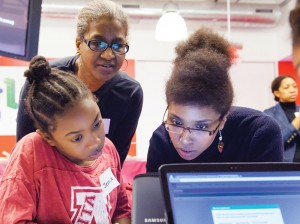
Throughout childhood Kai had been a heavy gamer, spending her elementary-school years absorbed in Xbox, Game Boy and World of Warcraft. When Kai was 12 her mother sent her to a computer-science summer camp at Stanford University, where Kai discovered she could use technology not only as a pastime but as a creative tool.
For Bryant, however, her daughter’s awakening stirred up those old feelings of isolation. If Kai continued to pursue this passion, would she too be the only black woman in the room?
No. That had to change.
Bryant knew that the middle-school years are when both boys and girls—but mainly girls—begin to lose interest in STEM (science, technology, engineering and math) fields. In April 2011, Bryant launched her first Black Girls Code computer-programming workshop in San Francisco. During the one-week summer session, 14 girls from ages 6 to 13 learned not only the basics of programming but also about application and Web design. They took field trips to visit tech companies like Facebook and Google. They worked in groups, brainstorming on technology solutions and artistic choices.
The workshop caught fire in ways Bryant had never imagined. “At first we thought we’d mainly focus on 10- to 13-year-old girls,” she says. “But we quickly found out we could get a good start much earlier in the pipeline. That was just by accident.”
AN EARLY START
Younger siblings of the target attendees began asking if they could go through the workshop, and Bryant let them. “Those 6- and 7-year-olds often were just as capable of learning the curriculum as the older students and even more enthusiastic about it.
“It’s been three years now since we started Black Girls Code,” she says, “so my 7-year-olds are now 10 and my 8-year-olds are now 11. As the organization has grown, we’ve found that if we start very early, like with girls at age 7, and keep them in the pipeline and attending workshops, their interest has not waned. Even though they’re in those weird middle-school years, they are just as interested, if not more so, than they were before.”
In just three years Black Girls Code has reached more than 3,000 girls from all walks of life. The goal is for 1 million girls to learn coding through Black Girls Code classes by the year 2040.
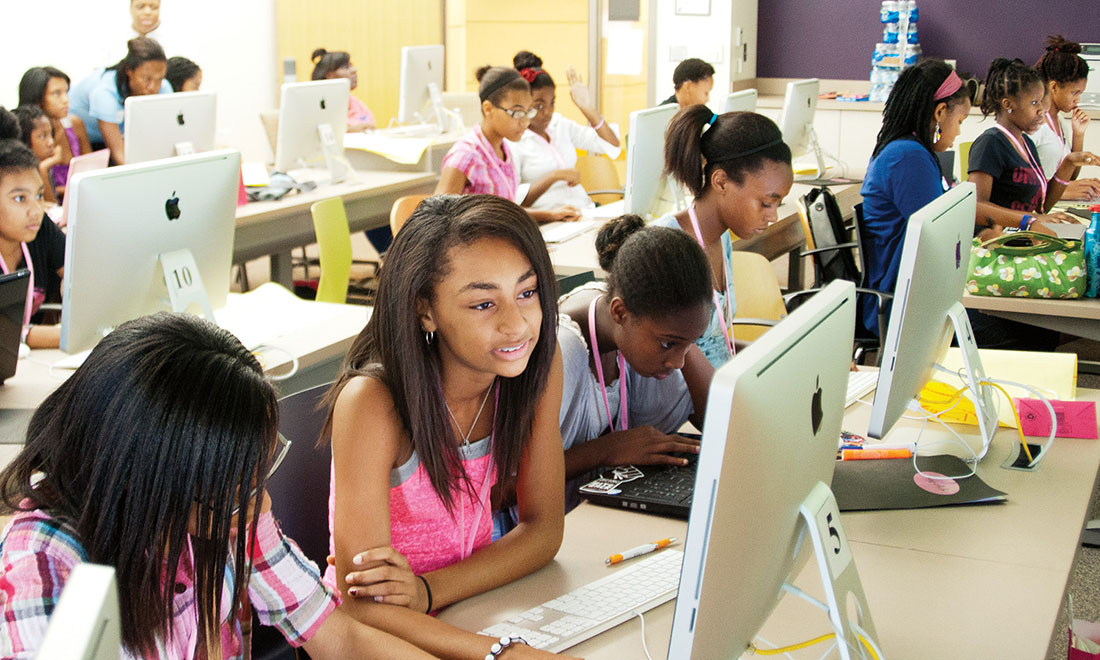
The organization now includes seven U.S. chapters, with plans to launch eight additional domestic chapters in the near future—requiring Bryant to choose from among nearly 60 cities that have requested chapters—plus a chapter in London and another in Africa. “Kenya, Ghana and Liberia are at the top of our list,” Bryant says. “We’ve had requests from all over the continent.”
A one-day class in the U.S. has a fee of $35, and a five-day summer-camp session costs $250. Black Girls Code works closely with businesses to sponsor scholarships. So far, about 90 percent of girls at the summer camps have been able to attend for free.
“One of the things we really stress is that, although our core demographic is underrepresented girls in our African American, Latino and Native American communities, the classes are very diverse and are open to any girls,” Bryant says. “We don’t have any boys in the classes, but we do open them to any girls.”
Bryant is able to control costs through a hefty use of volunteers. To date, more than 2,000 volunteers—women and men from all racial and ethnic backgrounds—have given their time to Black Girls Code. These volunteers include computer scientists, software engineers, college students, graduate students, moms, dads and teachers. Some are so enthusiastic about Black Girls Code that they travel long distances to work for free.
They do so to reach children like Aita, an early member of Black Girls Code. One of 10 children in her family, Aita had no interest in computer science when her parents signed her up for a class when she was 11. Yet she was a natural. During the next two years, she blossomed and became a leader among her coding peers. In the spring of last year, she was at her middle school when a teacher walked by and realized Aita was showing her friends how to build a Web page. The teacher was so impressed that she enlisted Aita to teach technology classes to other students at the middle school. Now 13, Aita continues to teach herself new programming languages so she can be a better instructor for her peers.
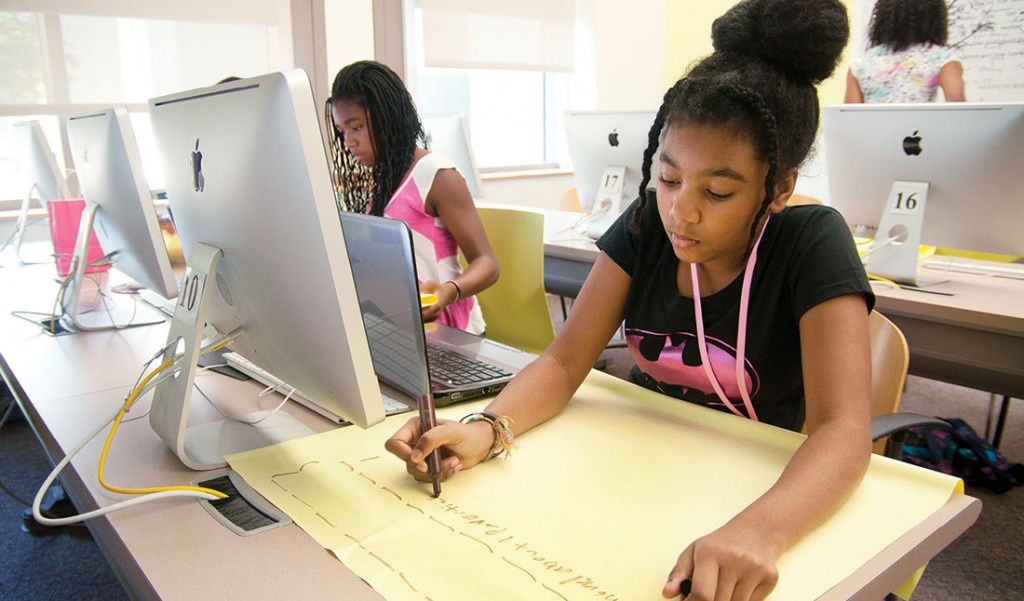
Earlier this year Kimberly Bryant was named to The CNN 10: Visionary Women, a list of 10 women who are helping other women to find success and empowerment. “We don’t want to just teach the girls to code,” she told the news network during an interview. “We also want to teach them to create businesses, to become business owners, and become the next Mark Zuckerberg or Bill Gates.”
In 2013, Bryant was honored as a Champion of Change by the White House for her work in tech inclusion and for her focus on bridging the digital divide for girls. Last year she also was selected by Business Insider as one of the 25 Most Influential African Americans in Technology and was named to The Root 100 list and the Ebony Power 100 list. In 2012 she received the prestigious Jefferson Award for Public Service for her work to support communities in the San Francisco area. She serves on the Champions Board of the National Girls Collaborative Project and on the board of the National Center for Women & Information Technology’s K–12 Alliance.
“The impact of our work speaks to how girls are natural change agents and natural teachers of others,” Bryant says. “I even see this with my own daughter. If you teach one girl, she will naturally turn around and teach five, six or 10 more.” Exponential teaching, Bryant explains, is how Black Girls Code will reach its goal of 1 million participants.
Another enlightening discovery for these girls is how they can use technology to better their communities. While boys may envision a game in which cool superheroes shoot laser guns and kill bad guys, girls tend to focus on social-impact subjects. Bryant’s students have built programs to prevent bullying, increase recycling, and make food banks more efficient.
Including this population in the high-tech world is bound to be good for everybody, Bryant argues. Their participation in the design, creation and implementation of games, computer apps and robotics will make those products stronger.
“As women we are natural collaborators. All the social and aesthetic qualities and sensibilities we bring to the table are needed,” she says. “Human-centered design is really going to create a better product in the future—in all kinds of ways and in all industries. That’s the skill and strength women have as contributors in the technology space.”
Years ago when Bryant was a new engineering school graduate, she transitioned into the power industry. A quarter-century later she has come full circle.
Who codes? More than ever before, Black Girls Code. Now we’re talking power.
Lisa A. DuBois, a longtime Vanderbilt Magazine contributor, is a former Nashville journalist now living in Paradise Valley, Arizona.
See Bryant’s keynote address during Vanderbilt School of Engineering’s weeklong celebration of 2014 National Engineers Week.